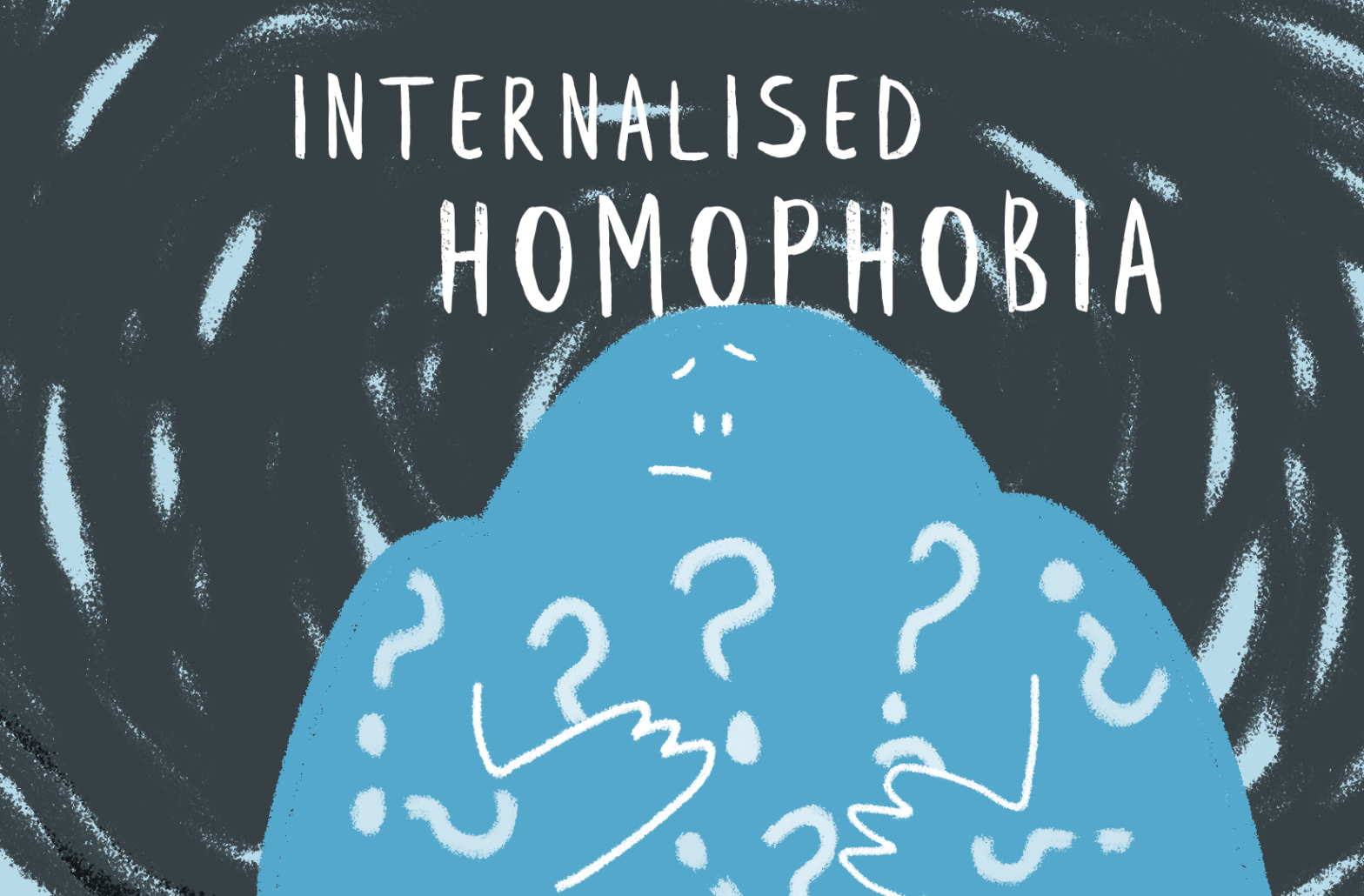Internalised Homophobia

By the end of this tool, you will hopefully understand what internalised homophobia is, how to recognise internalised homophobia in yourself and others and have some practical solutions to overcome it.
What it is and why people experience it
Internalised homophobia occurs when a person is subject to society’s negative perceptions, intolerance, and stigma towards the LGBQ (Lesbian, Gay, Bisexual and Queer/Questioning) community. They then consciously or unconsciously turn these homophobic biases inwards, believing that they are true.
Internalised homophobia generally happens to LGBQ individuals, but it is shown that heterosexual people can also experience it.
In society we have learnt and been taught that heterosexuality is the norm and
“Correct way to be”. Hearing and seeing negative depictions of LGBQ people can lead us to internalise or take in these negative messages. This can lead to poor mental health and wellbeing.
How can internalised homophobia present itself
Internalised homophobia can present itself in many ways that can be linked to low mental health and wellbeing. Some examples include:
How to overcome it
✔️ Think about how internalised homophobia could be impacting your life
✔️ Read more about internalised homophobia. There is a lot of information out there, especially lived experiences of people within the LGBTQ+ community
✔️ Community – building a support network is essential. The compassion of other LGBQ people and straight allies can be tremendously healing. Others who are at a different stage in the process can often offer valuable insight and solidarity
✔️ Learn about the history of the LGBTQ+ rights movement. Find role models and investigate their story. See all the different identities and human beings it took to effect progress towards equality and justice
✔️ Negative influences – It is important to understand what/who could be causing your internalise homophobia and create steps to mitigate this
✔️ Practice self-awareness. Be aware of your negative reactions, critical self-talk and judgment of others. Each time you do it, examine the reason why.
✔️ If you can do it safely, come out of the closet. While it has potential to be painful, and might be repetitive and exhausting, this step can be immensely rewarding
Remember that internalized homophobia is not coming from inside of you. You are not sick, and you don’t need to be cured.
Glossary of terms
Lesbian: A woman who has emotional, sexual and/or romantic attraction to other women
Gay: A man who has emotional, sexual and/or romantic attraction to other men
Bisexual: An umbrella term used to describe emotional, sexual and/or romantic attraction towards more than one gender.
Queer: Queer is a term used by those wanting to reject specific labels of, sexual orientation and/or gender identity. Although some LGBT people view the word as a slur, it was reclaimed in the late 80s by the queer community who have embraced it.
Questioning: The process of exploring your own sexual orientation and/or gender identity.
LGBQ: Lesbian, Gay, Bisexual, Queer/Questioning
LGBTQ+: Lesbian, Gay, Bisexual, Transgender, Queer/Questioning, + all other identities
This tool aimed to explore the meaning, causes and symptoms of internalised homophobia, and propose practical solutions to overcome it. Our information is based on some articles, studies, papers and a personal account, however every LGBQ person has their own unique story, which results in the symptoms of internalised homophobia being different for everyone In the tool we use the acronym LGBQ most of the time, and sometimes use LGBTQ+ when referring to the general community and movement. While recognising the fluidity and intersectionality of sexuality and gender, it is important to distinguish that internalised homophobia and internalised transphobia are not the same thing.
- Do you feel safe to be yourself with yourself?
- How do you speak to yourself about your sexuality?














